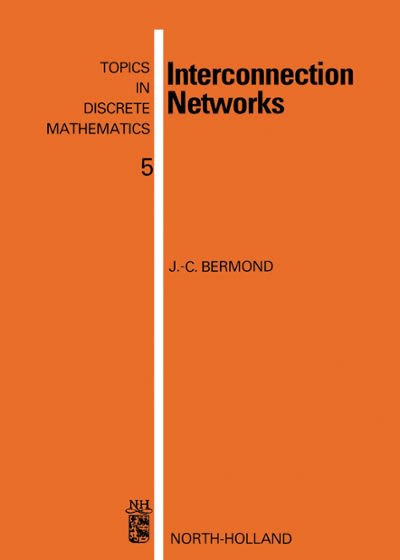Question
Questions 1 to 16 are true or false questions, 2 points each. Highlight or bold the correct answers. 1. Observations that are measured at successive
Questions 1 to 16 are true or false questions, 2 points each. Highlight or bold the correct answers.
1. Observations that are measured at successive points in time represent time-series data?(2pts)
A. True
B. False
2. Twenty-five percent of a sample of 200 professional tennis players indicated that their parents did not play tennis. Based on this sample, we estimate that approximately 25% of the parents of all professional tennis players did not play tennis, plus or minus 5%. This is an example of using descriptive statistics. (2pts)
A. True
B. False
3. In a sample of 400 students selected from a large college of business, 30% are found to be marketing majors. The 30% is a statistic. (2pts)
A. True
B. False
4. The classifications of student majors, such as accounting, economics, marketing, etc., is an example of an ordinal variable.(2pts)
A. True
B. False
5. Quantitative variables cannot be nominal variables. (2pts)
A. True
B. False
6. A relative frequency distribution lists the categories and their counts.
A. True
B. False
7. A histogram consists of columns or bars, and therefore, can be used to depict categorical data. (2pts)
A. True
B. False
8. A sample has a mean of 107, a median of 122, and a mode of 134.The distribution of the data is positively skewed.(2pts)
A. True
B. False
9. A sampling error occurs if there is something wrong with the sample. (2pts)
A. True
B. False
10. The Dean of Students from a large university mailed a survey to 500 students selected at random. The sample was designed to include 125 students randomly selected from each of the freshman, sophomore, junior, and senior classes on campus. The sampling method used is clustered sampling.(2pts)
A. True
B. False
11. A researcher is conducting a study on eating disorders. Using a list of recent participants in the online Weight Watchers program, she randomly selects a name from the alphabetized list. She then chooses every tenth person from that point on to include in her study. This sampling strategy is called simple random sampling.(2pts)
A. True
B. False
12. Clustered sampling can be used if the population member are widely dispersed.(2pts)
A. True
B. False
13. A researcher is conducting a study to determine how knowledgeable teenagers are about making good food choices.She decides to interview teenagers eating at a fast food restaurant.The sample she gets would be a convenience sample.(2pts)
A. True
B. False
14. Convenience samples are generally biased, and voluntary response samples are usually unbiased. (2pts)
A. True
B. False
15. A distribution (histogram) may or may not have a mode. (2pts)
A. True
B. False
16. If two variables have a strong linear relationship, then there should be a causal relationship between them. (2pts)
A. True
B. False
Use the following contingency table to answer questions 17, 18, and 19.
The option to buy extended warranties is commonplace with most electronics purchases. But does the type of purchase affect a consumer's willingness to pay extra for an extended warranty? Data for 480 consumers who purchased digital cameras and laptop computers from a leading electronics retailer are summarized in the table.
Warranty No Warranty Total
Digital Camera 50 80 130
Laptop Computer 150 200 350
Total 200 280 480
17. What is the probability that a consumer does not purchase an extended warranty? Show your work. (6pts)
18. What is the probability that a consumer purchases a digital camera and an extended warranty? Show your work. (6pts)
19. What is the probability that a consumer purchases an extended warranty given that he/she has purchased a digital camera? Show your work. (6pts)
20. Using the table below, calculate the variance of X, variance of Y, standard deviation of X, standard deviation of Y,the covariance between X and Y, the correlation coefficient between X and Y, and find the regression line assuming X is the independent variable (find the slope and the intercept).Show your work. (50pts)
Fill in the Blanks:
X Y X-Xbar Y-Ybar (X-Xbar)^2 ( Y-Ybar)^2 (X-Xbar)*(Y-Ybar)
3 5
8 13
15 11
22 22
24 32
Sum
Calculate the following and show the formulas used and your work.
Xbar:
Ybar:
Variance of X:
Variance of Y:
Standard Deviation of X:
Standard Deviation of Y:
Covariance between X and Y:
Correlation Coefficient between X and Y:
The Slope of the Regression Line:
The Y Intercept of the Regression Line:
Regression Line:
Step by Step Solution
There are 3 Steps involved in it
Step: 1

Get Instant Access to Expert-Tailored Solutions
See step-by-step solutions with expert insights and AI powered tools for academic success
Step: 2

Step: 3

Ace Your Homework with AI
Get the answers you need in no time with our AI-driven, step-by-step assistance
Get Started


